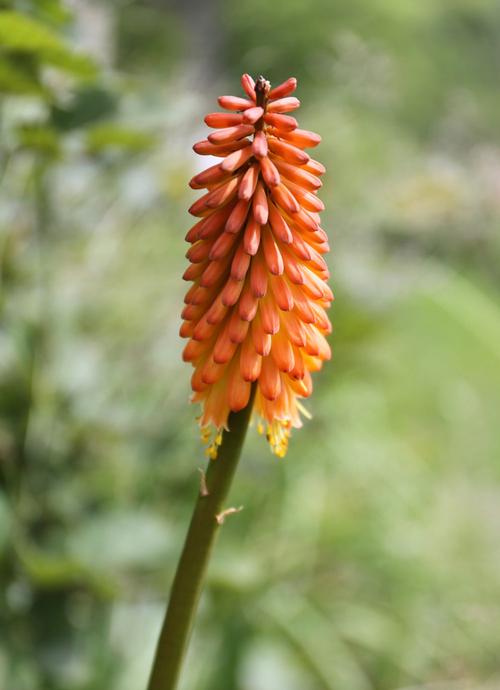Your Guide to Planning, Planting, and Growing Kniphofia
The brilliant, torch-like flowers of kniphofia are an exciting addition to any garden. These plants are sturdy, vigorous and trouble-free as long as you grow them in in loose, well-drained soil and full sun. They are winter hardy in zones 6-9, though with ideal growing conditions and a winter mulch, they can also survive in zone 5.
Plan for Success
Kniphofia are native to South Africa and are well-adapted to hot climates. Once established, the plants are relatively drought tolerant, although they grow best with consistent moisture – especially during hot or dry spells.
Kniphofia are perennials and not usually recommended for containers. The plants have a clumping habit and over time they can become quite large. Choose a planting location where they will have an opportunity to bulk up.

How to Plant Kniphofia
When planting kniphofia, position the crown (where roots meet stem) at or just slightly below the soil line. If the crown is planted too deeply it will be vulnerable to rot.
After planting, water well to settle the soil around the roots. If the soil is dry, water weekly for the first two months until the plant is able to establish new roots.

What to Expect
Kniphofia flowers open slowly from the bottom up and last for several weeks. Their bright color attracts hummingbirds. They are also good cut flowers with a long vase life.
After the blossoms have faded, cut off the stems near the base of the plant. This may encourage another round of flowers. Keeping the foliage strong and healthy will encourage the plant will produce as many flowers as possible. In cold areas, the leaves will die back to the ground in winter. In warm areas they may stay green year-round.
Good drainage is essential for kniphofia because the crown of the plant is susceptible to rot – especially during the winter months. Otherwise they are disease-free. In areas with high humidity or frequent rain, watch for slugs and snails, which can damage the foliage.

Aftercare
In early spring, pull away any dead leaves and cut the remaining foliage back to 3”. The best time to divide kniphofia is early spring. Use a sharp spade to slice down through the crown to cut away fist-sized clumps for transplanting.
Shop HERE for kniphofia.


